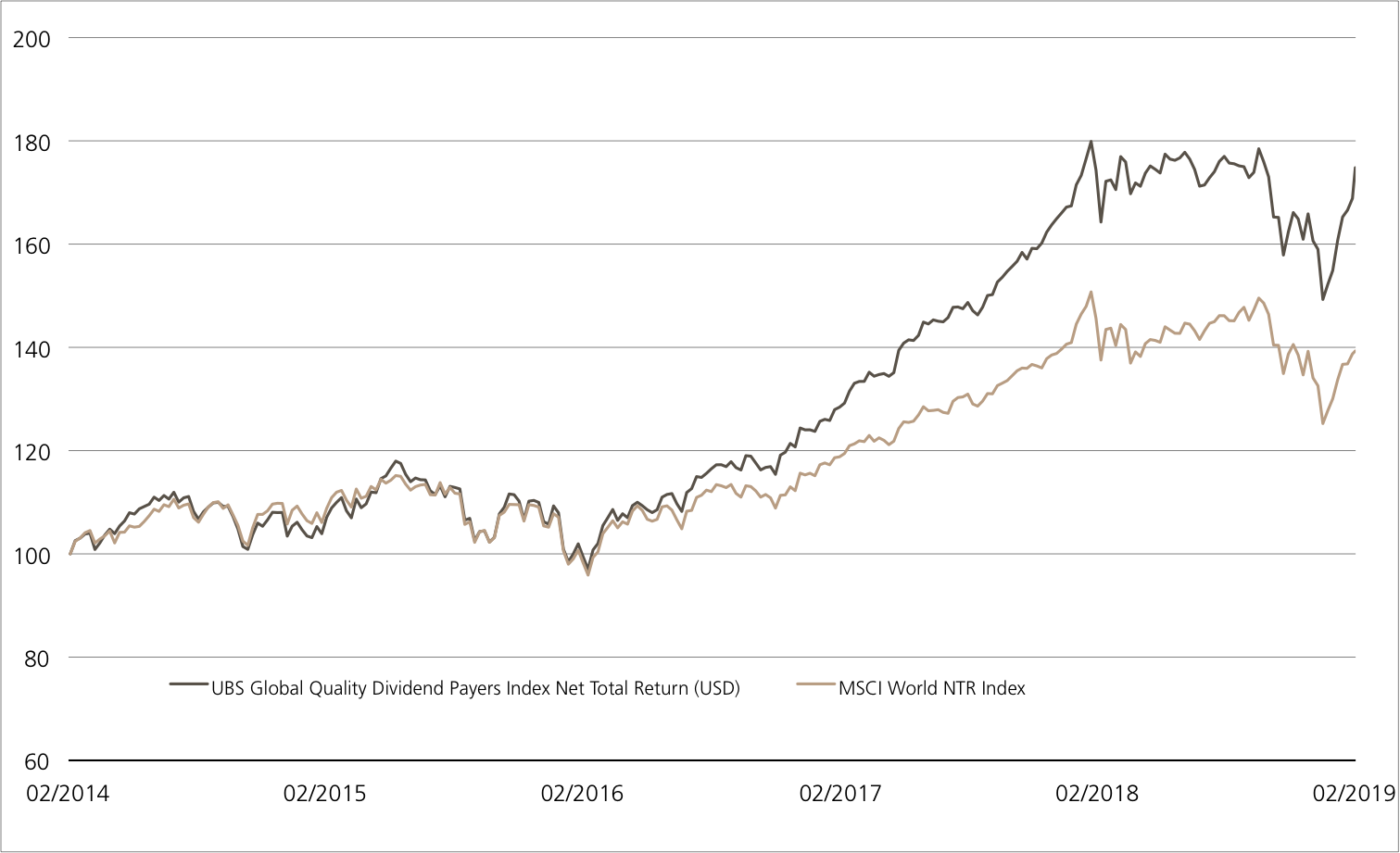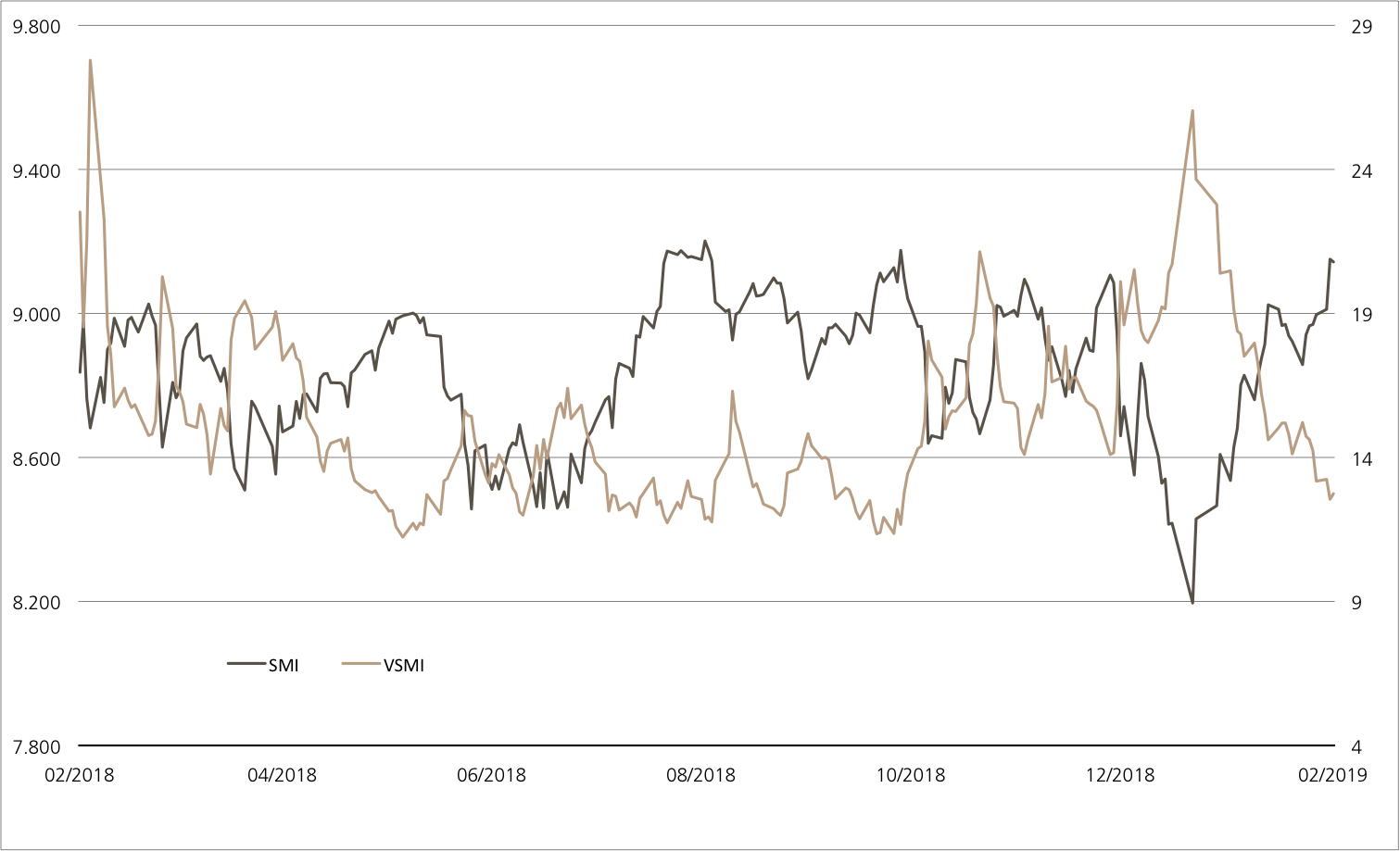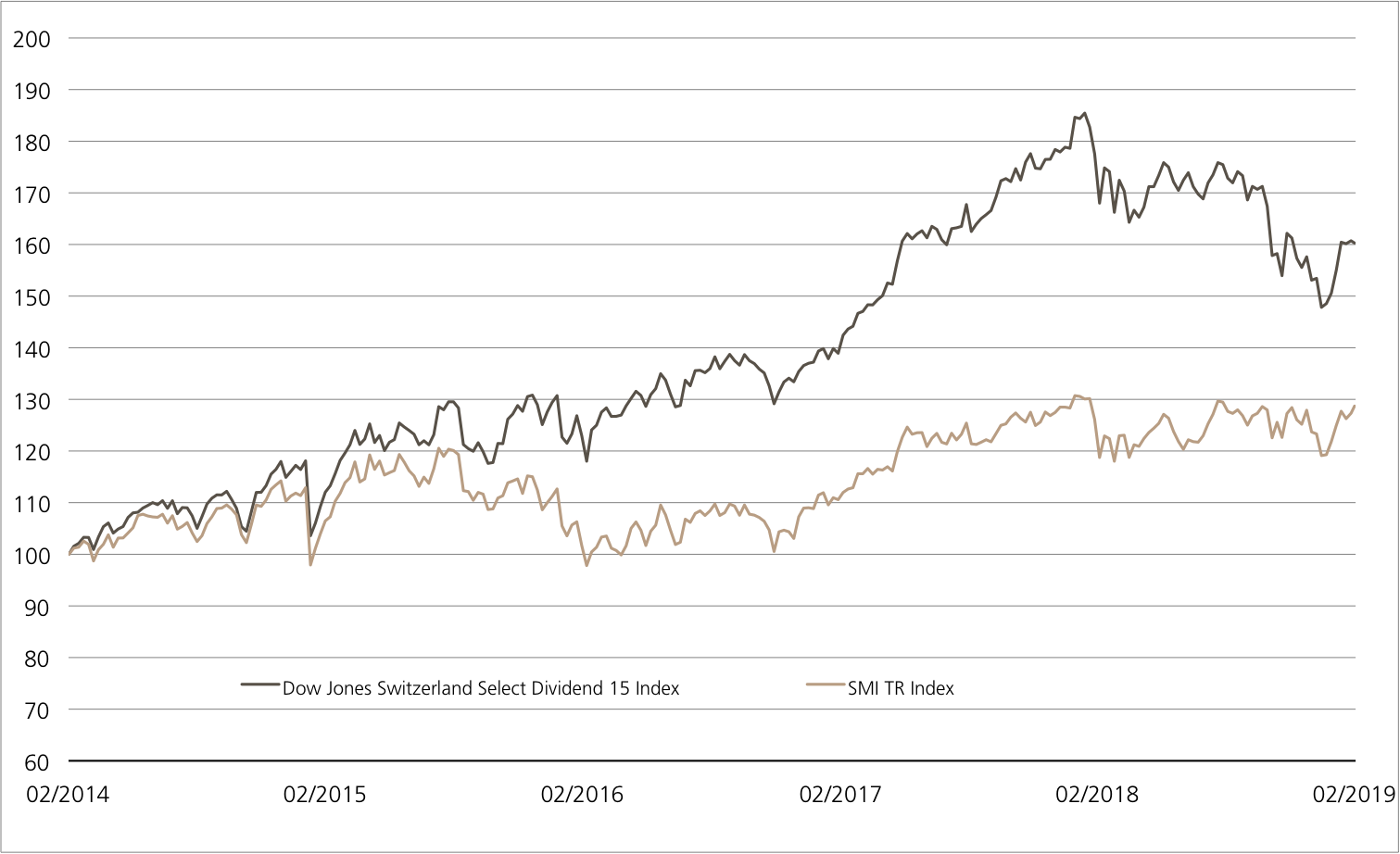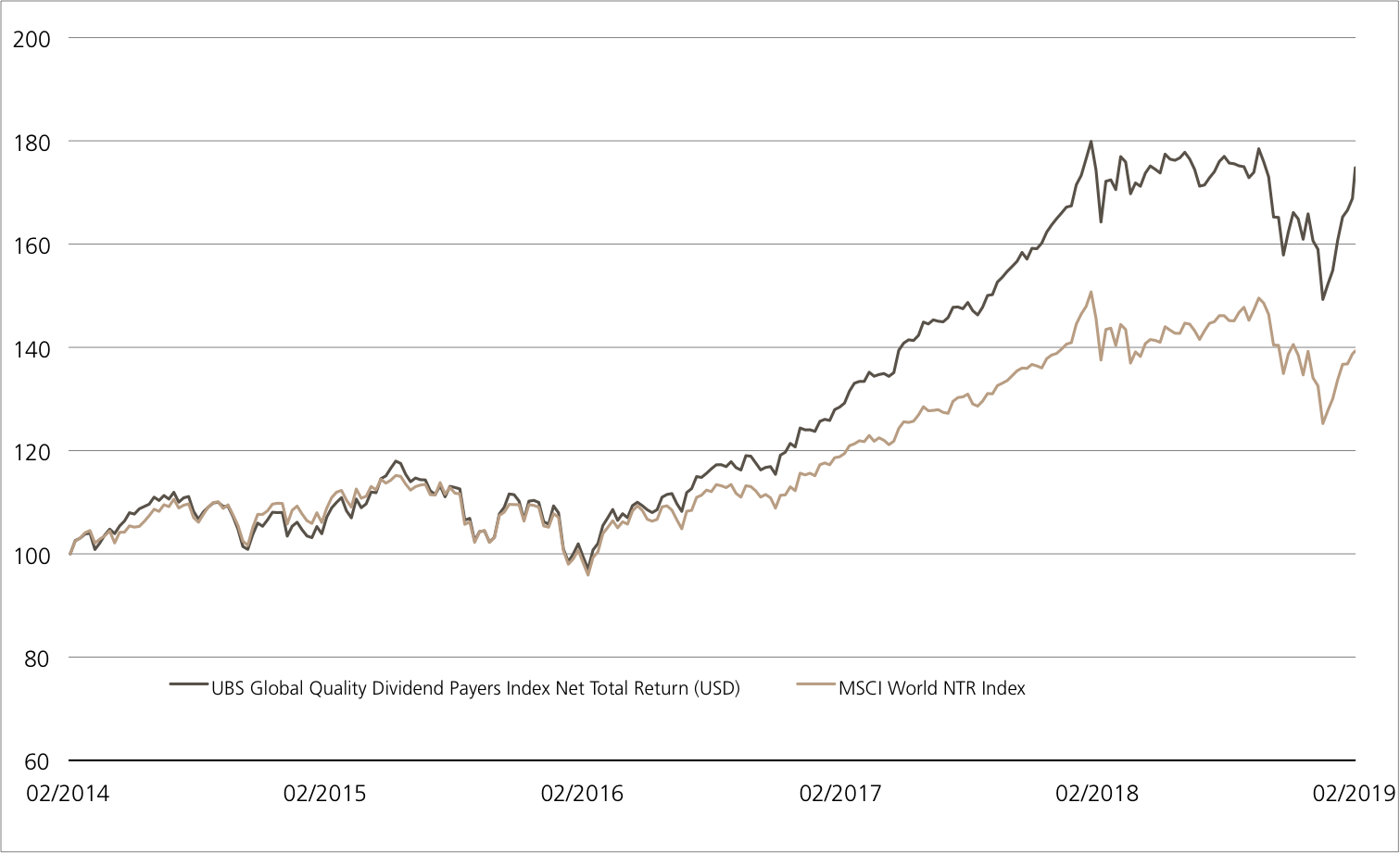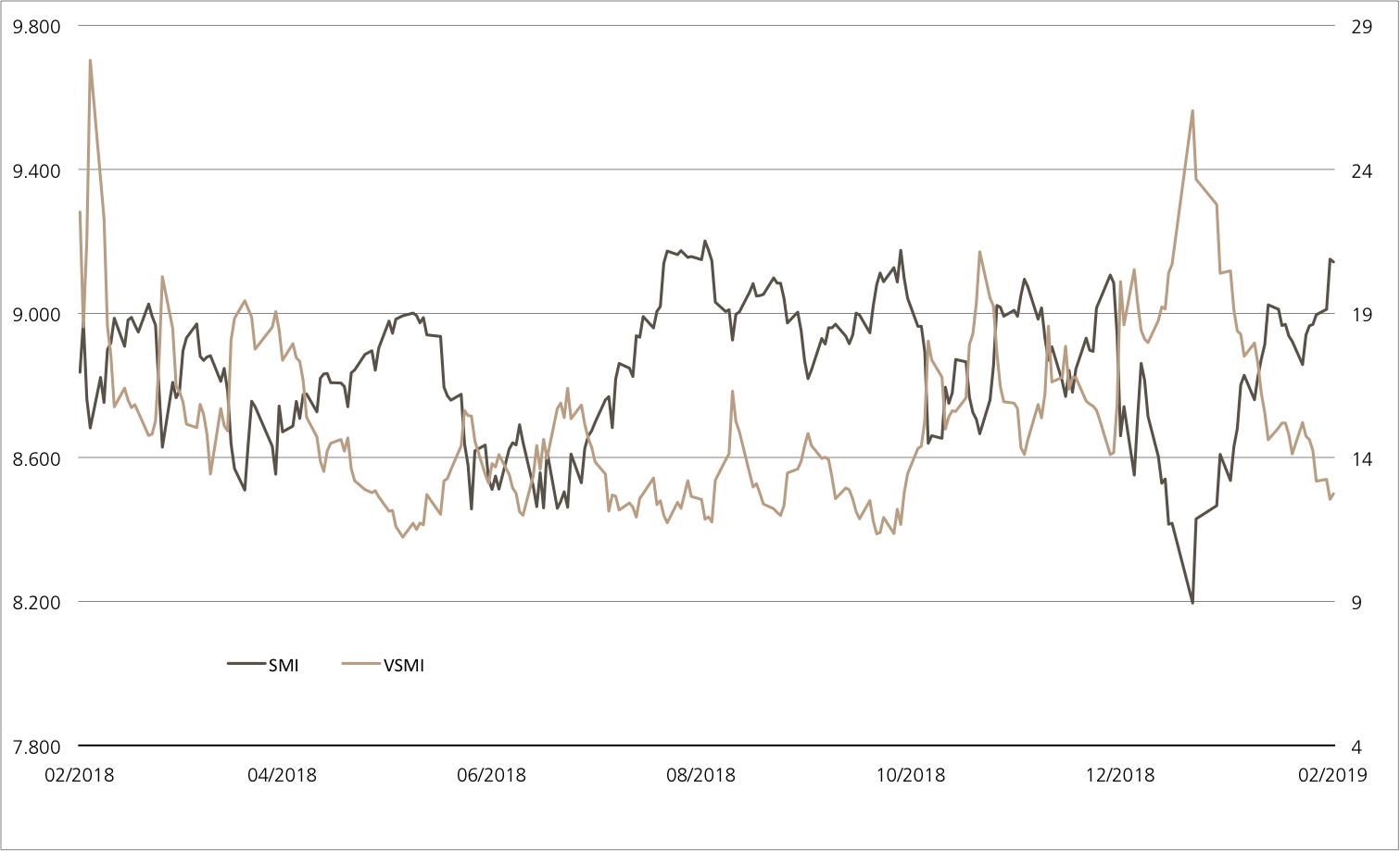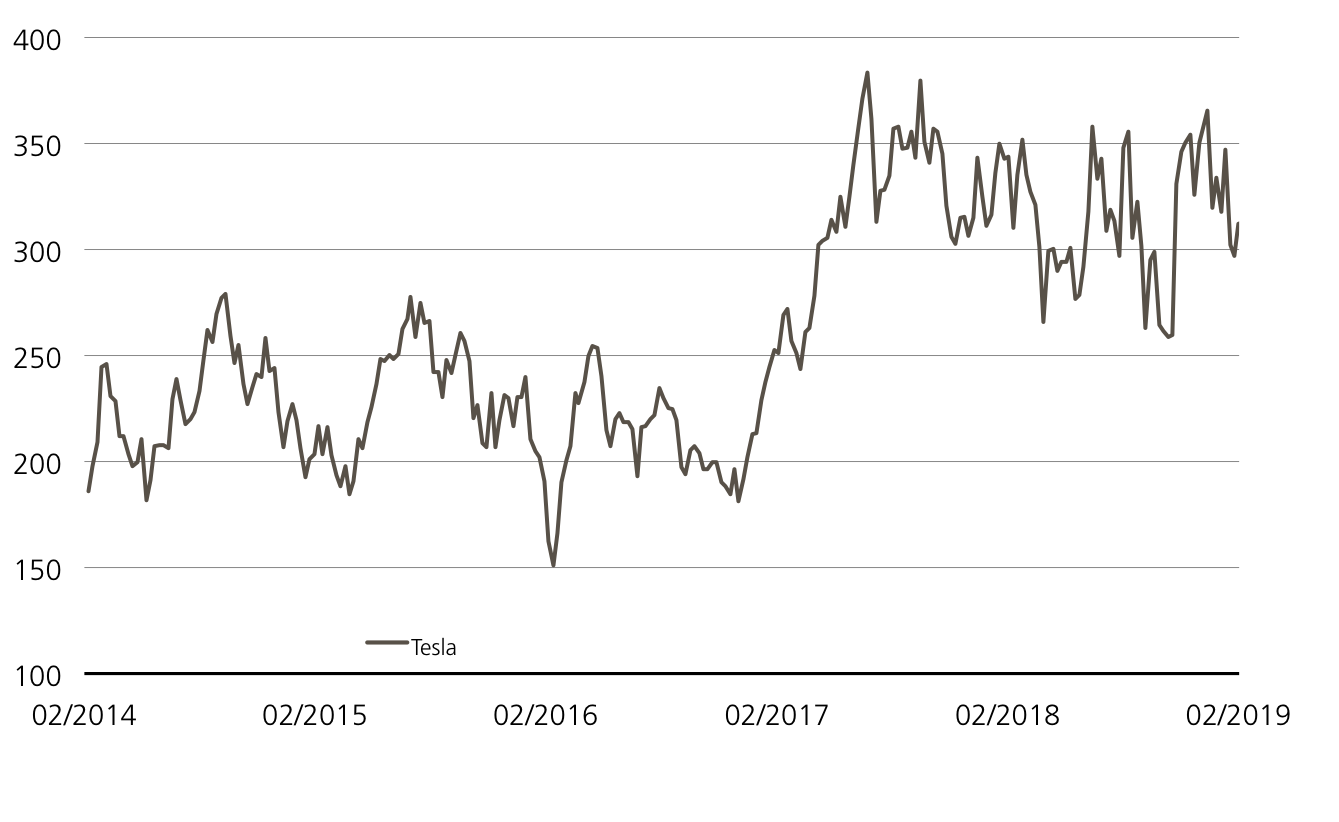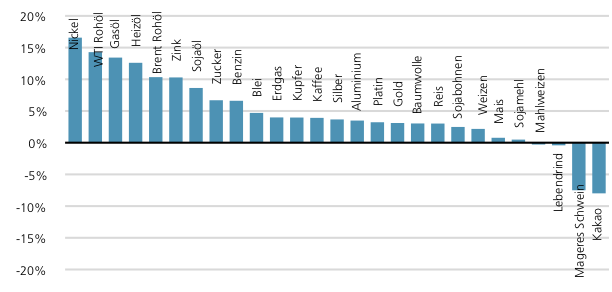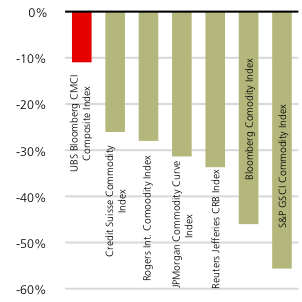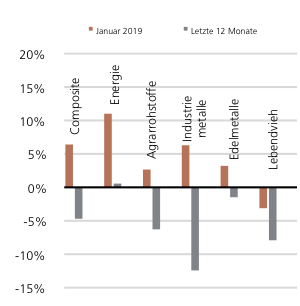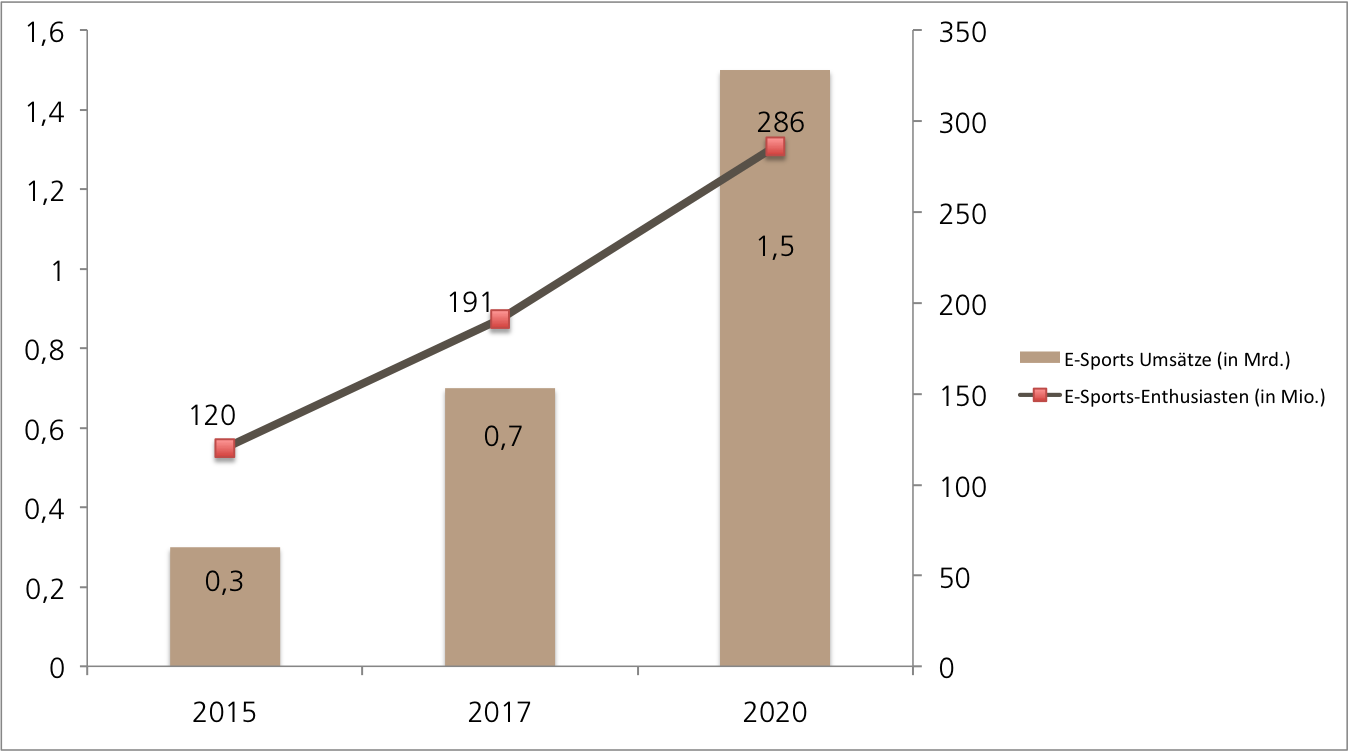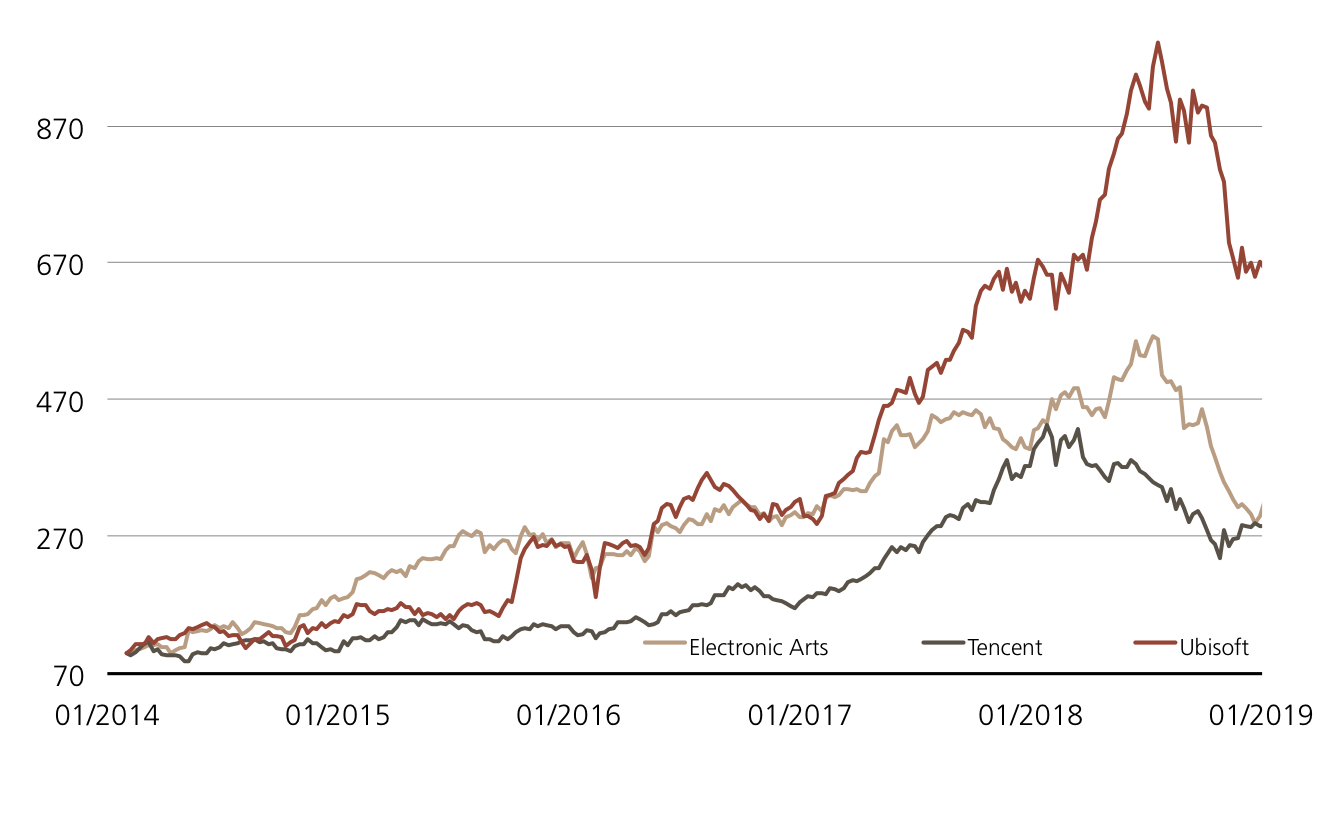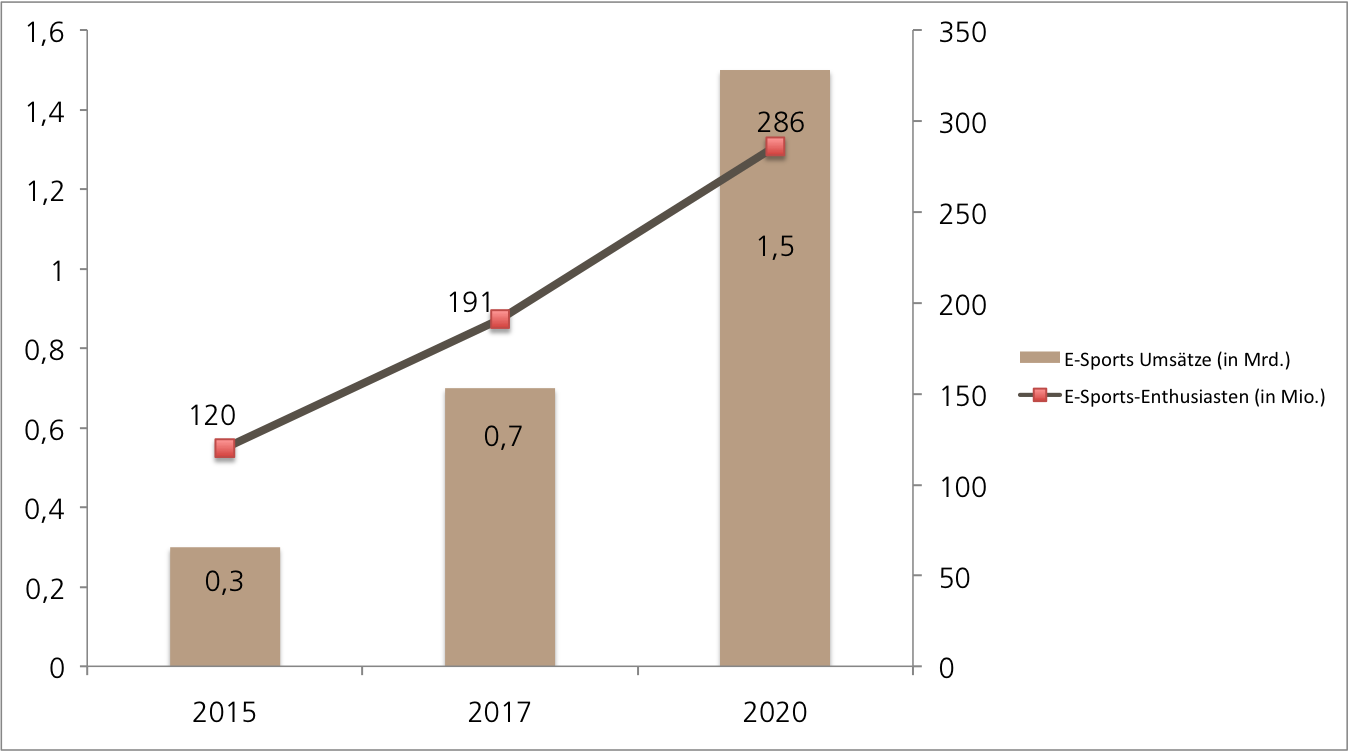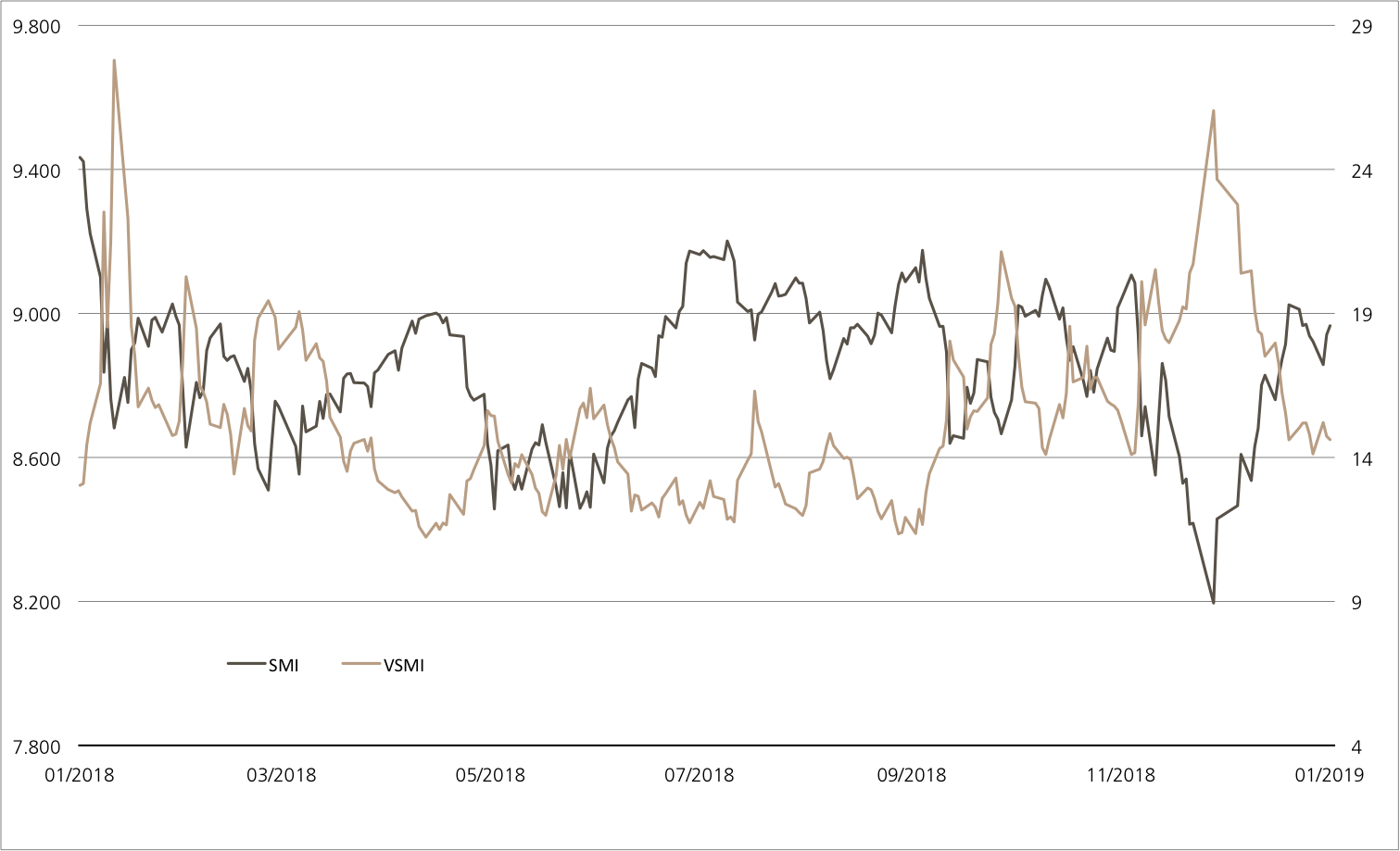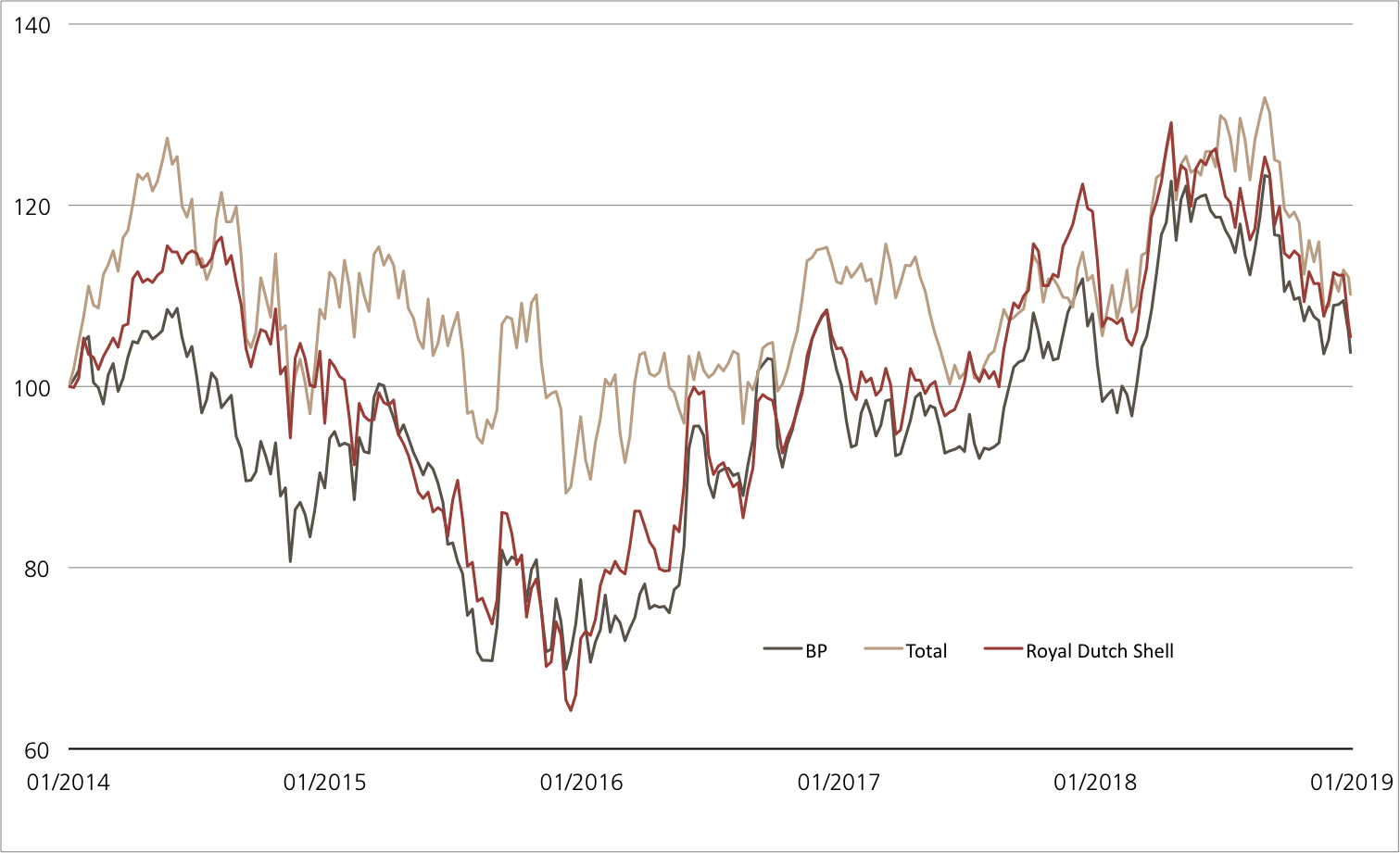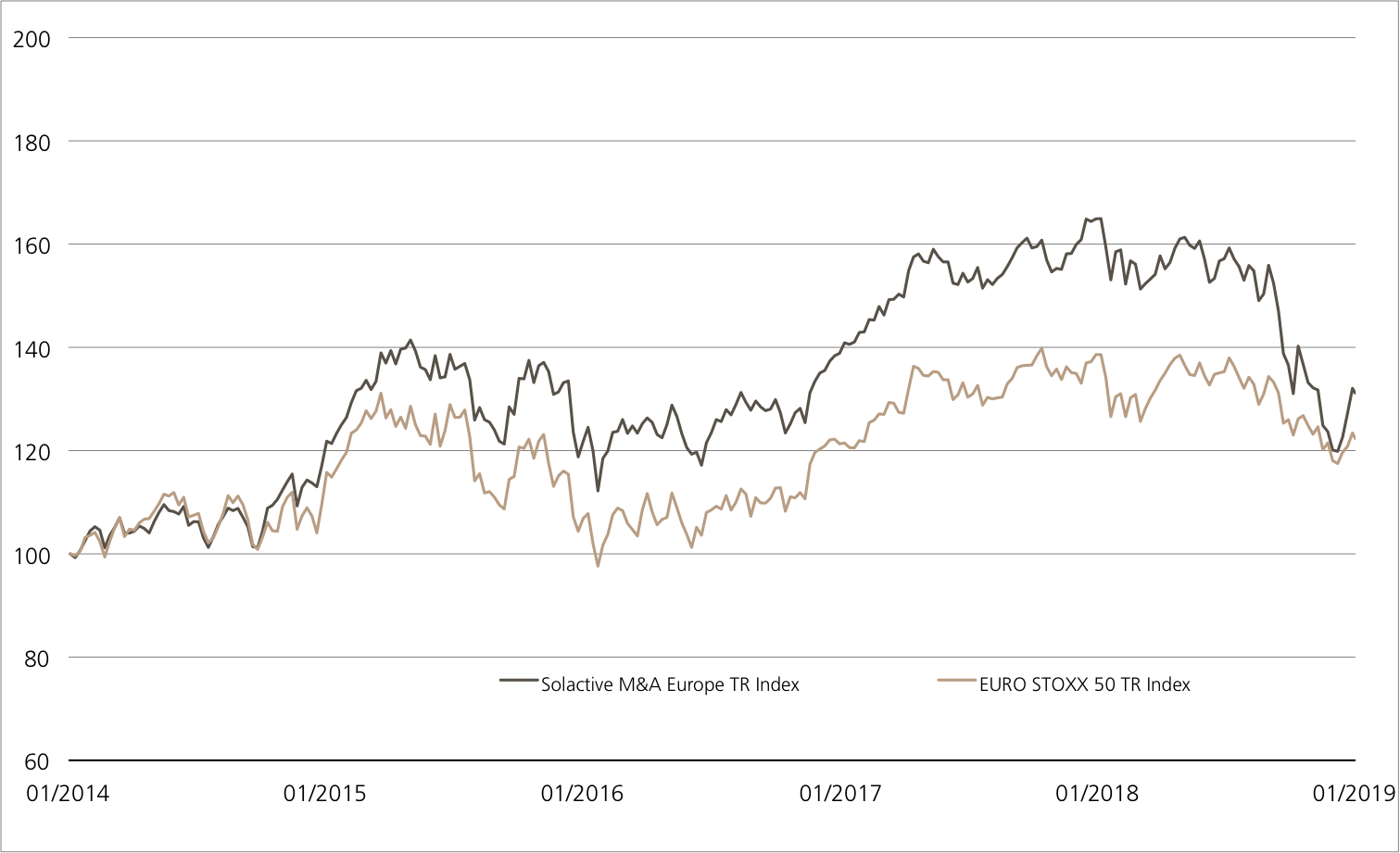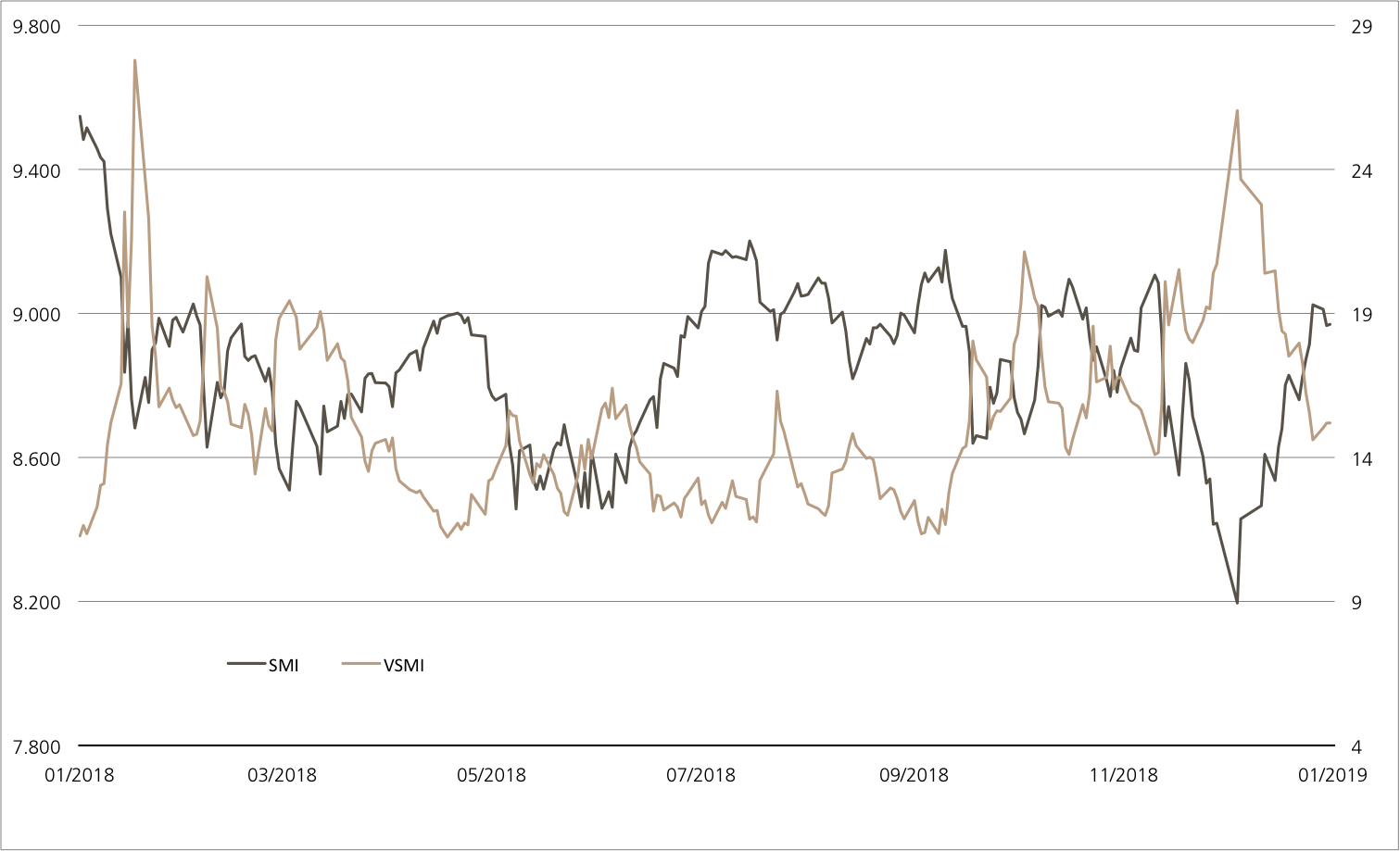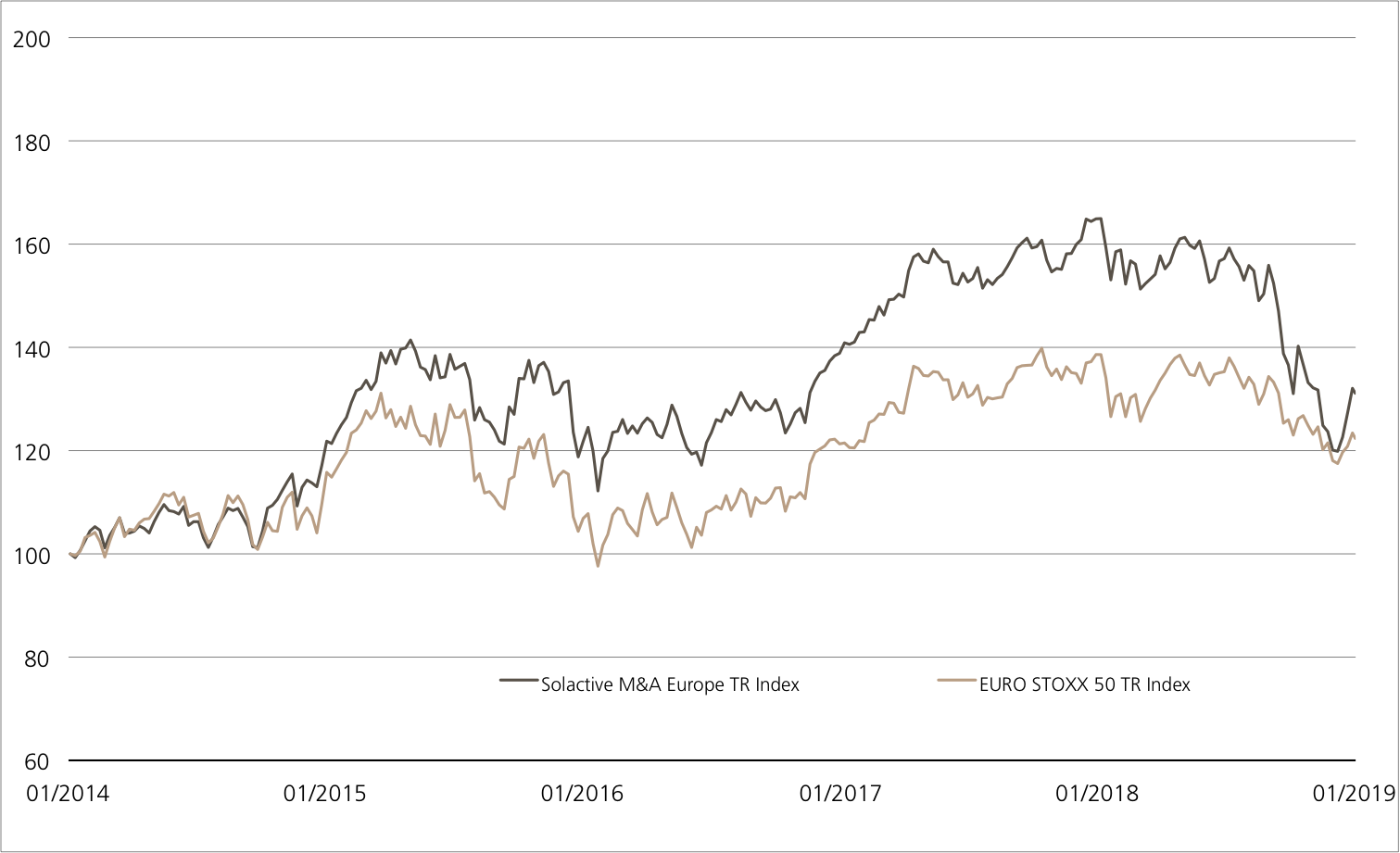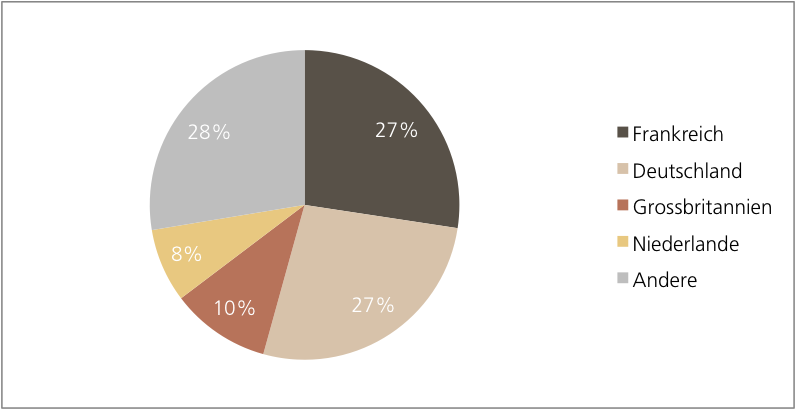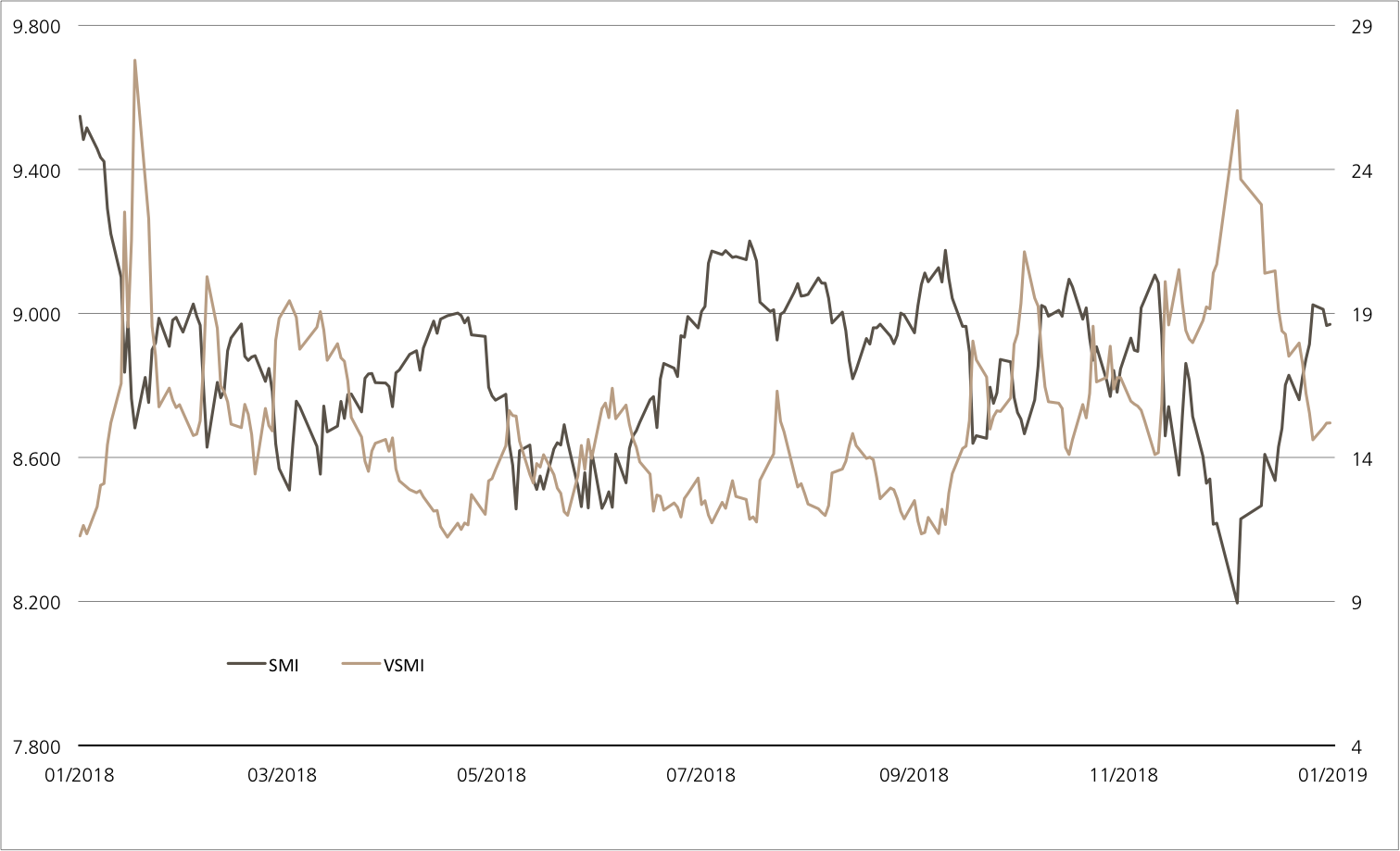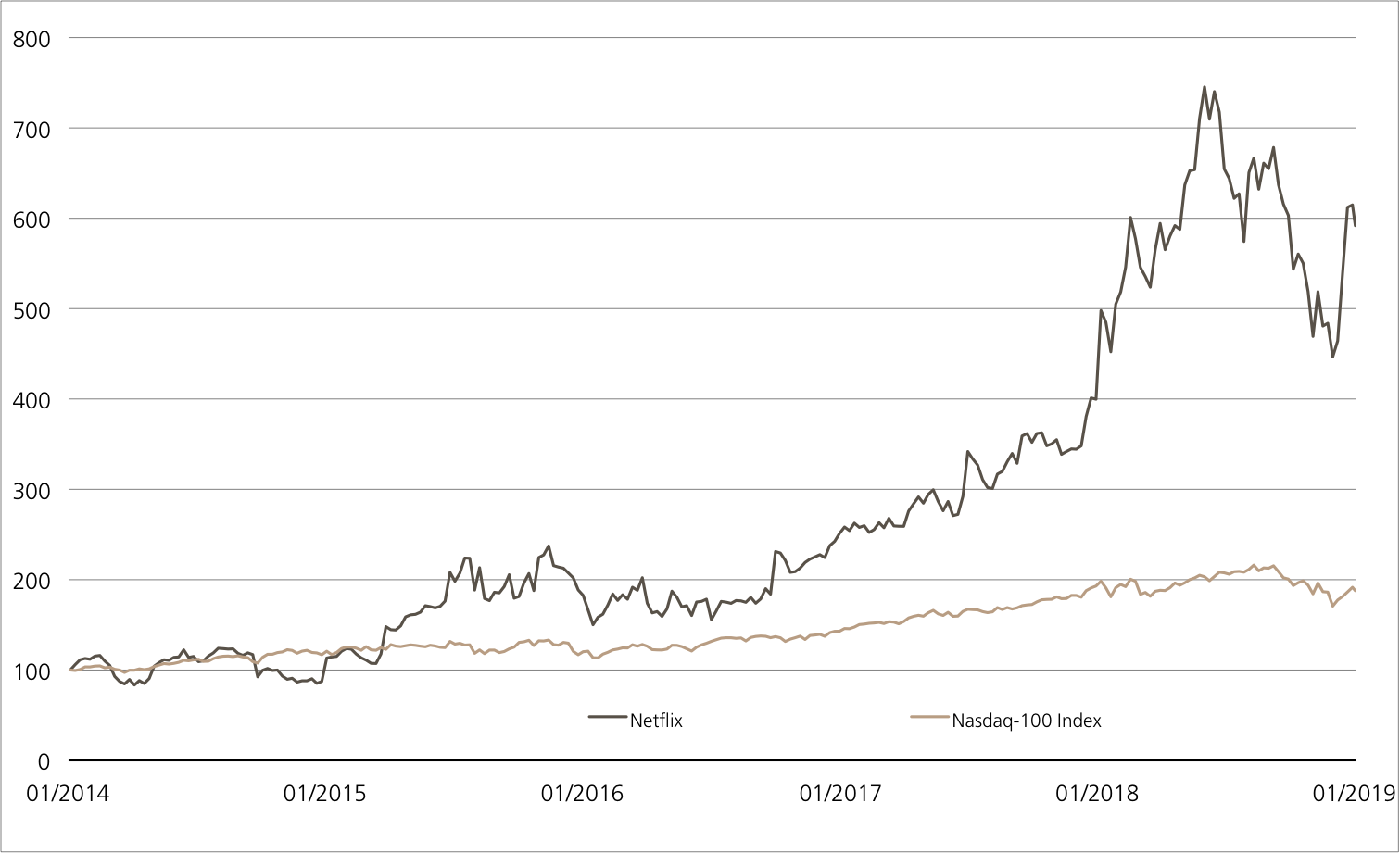Weekly Hits: Europäische Versicherer, Spotify & Twitter

- Thema 1: Europäische Versicherer – Guter Start in die Bilanzsaison
- Thema 2: Spotify / Twitter – Duo mit enormer Reichweite
Europäische Versicherer
Guter Start in die Bilanzsaison
In die derzeit laufende Bilanzsaison sind nun auch die Versicherer eingestiegen. Als erster Assekuranz-Konzern in der Schweiz hat Zurich Insurance seine Zahlen für das abgelaufene Geschäftsjahr vorgelegt. In Deutschland machte die Münchener Rück den Start. Beide Konzerne präsentierten blitzsaubere Bilanzen und konnten die Erwartungen der Analysten übertreffen. Die gute operative Entwicklung spiegelt sich auch in den Kursen wider. Auf Sicht von einem Jahr befindet sich das Duo nicht nur deutlich vor dem Gesamtmarkt, die Aktie der Münchener Rück hat sogar ein neues Allzeithoch erreicht und die Zurich Insurance steht kurz davor.¹ Mit dem ETT (Symbol: ETINS) auf den STOXX™ Europe 600 Insurance Index lässt sich vollumfänglich und breit diversifiziert an den Chancen der Branche partizipieren.² Der Kick-In GOAL (Symbol: KCNGDU) auf Zurich Insurance bietet dagegen konservativen Anlegern eine Einstiegschance. Das Strukturierte Produkt stellt bereits bei seitwärts tendierenden Kursen eine Rendite von 9.4 Prozent in Aussicht.
Die Gesamtjahreszahlen von Zurich Insurance können sich sehen lassen: Der Nettogewinn übertraf mit 3.72 Milliarden US-Dollar selbst die höchste Analystenprognose von 3.56 Milliarden US-Dollar. Auch das operative Ergebnis lag mit 4.57 Milliarden US-Dollar klar über der Konsensschätzung. «Wir haben unsere Rentabilität weiter erhöht und die Kosten gesenkt», kommentiert Zurich-Chef Mario Greco das gute Abschneiden. (Quelle: Zurich Insurance, Medienmitteilung, 07.02.2019) An den Zielen hält Zurich weiter fest: Zwischen 2017 bis 2019 peilt der Konzern einen Betriebsgewinn nach Steuern von mehr als zwölf Prozent des Kapitals an. Im vergangenen Jahr waren es 12.1 Prozent. Auch die Aktionäre sollen an dem Erfolg beteiligt werden. Für 2018 schlägt der Vorstand eine Dividende von 19 Franken je Aktie vor, das entspricht einem Franken mehr als im Jahr zuvor.Auch die Münchener Rück schraubt seine Ausschüttung nach einem erfreulichen Jahresabschluss nach oben. Der weltgrösste Rückversicherer erwirtschaftete 2018 einen Nettogewinn von knapp 2.3 Milliarden Euro, im Vorjahr waren es lediglich 0.4 Milliarden Euro. Die Aktionäre dürfen sich auf eine um 7.5 Prozent höhere Dividende von 9.25 Euro je Aktie freuen.
Ob es die anderen europäischen Versicherungskonzerne Zurich Insurance und Münchener Rück gleichtun können, wird sich in den kommenden Tagen und Wochen zeigen. Beispielsweise legen am 21. Februar Swiss Re und AXA ihre Bücher offen, am 26. Februar folgt Swiss Life und am 7. März Baloise. Kurzfristig die grösste Spannung verspricht die Allianz. Europas grösster Versicherungskonzern wird am 15. Februar seine Daten bekanntgeben. Nach Angaben von Thomson Reuters erwarten die Analysten einen Anstieg beim Ergebnis je Aktie von 11.8 Prozent auf 17.00 Euro je Aktie. Grundsätzlich darf sich die deutsche Assekuranz auf ein gutes Jahr 2019 einstellen. Der Gesamtverband der Deutschen Versicherungswirtschaft (GDV) erwartet ein weiteres Prämien-Wachstum von rund zwei Prozent.
Chancen: Anleger können mit dem ETT (Symbol: ETINS) auf den STOXX™ Europe 600 Insurance Index eine diversifizierte Anlage in den Sektor wählen. Das Produkt kommt ohne eine jährliche Verwaltungsgebühr aus und partizipiert eins zu eins mit dem Basiswert.² Im Index befinden sich 35 Unternehmen; die Dividendenrendite beläuft sich auf 4.3 Prozent. Die Ausschüttungen werden auf Netto-Basis berücksichtigt. Der Callable Worst of Kick-In GOAL (Symbol: KCNGDU) auf Zurich Insurance ermöglicht dagegen ein teilgeschütztes Investment in die Versicherungsbranche. Das Produkt bietet bei einem Risikopuffer von 27.6 Prozent eine Seitwärtsrendite von 9.4 Prozent.
Risiken:Die Produkte sind nicht kapitalgeschützt. Eine negative Entwicklung des Basiswerts führt beim ETT zu entsprechenden Verlusten. Worst of Kick-In GOALs haben dagegen einen bedingten Kapitalschutz. Notiert der Basiswert während der Laufzeit einmal auf oder unter dem Kick-In Level (Barriere) und kommt zudem die Callable-Funktion nicht zum Tragen, muss der Basiswert am Verfalltag mindestens wieder auf Höhe des Strike Levels notieren. Andernfalls erfolgt die Rückzahlung durch Lieferung einer vorab fixierten Anzahl von Aktien, wodurch Verluste zu erwarten sind. Zudem trägt der Anleger bei Strukturierten Produkten das Emittentenrisiko, so dass das eingesetzte Kapital – unabhängig von der Entwicklung des Basiswertes – im Falle einer Insolvenz der UBS AG verloren gehen kann.
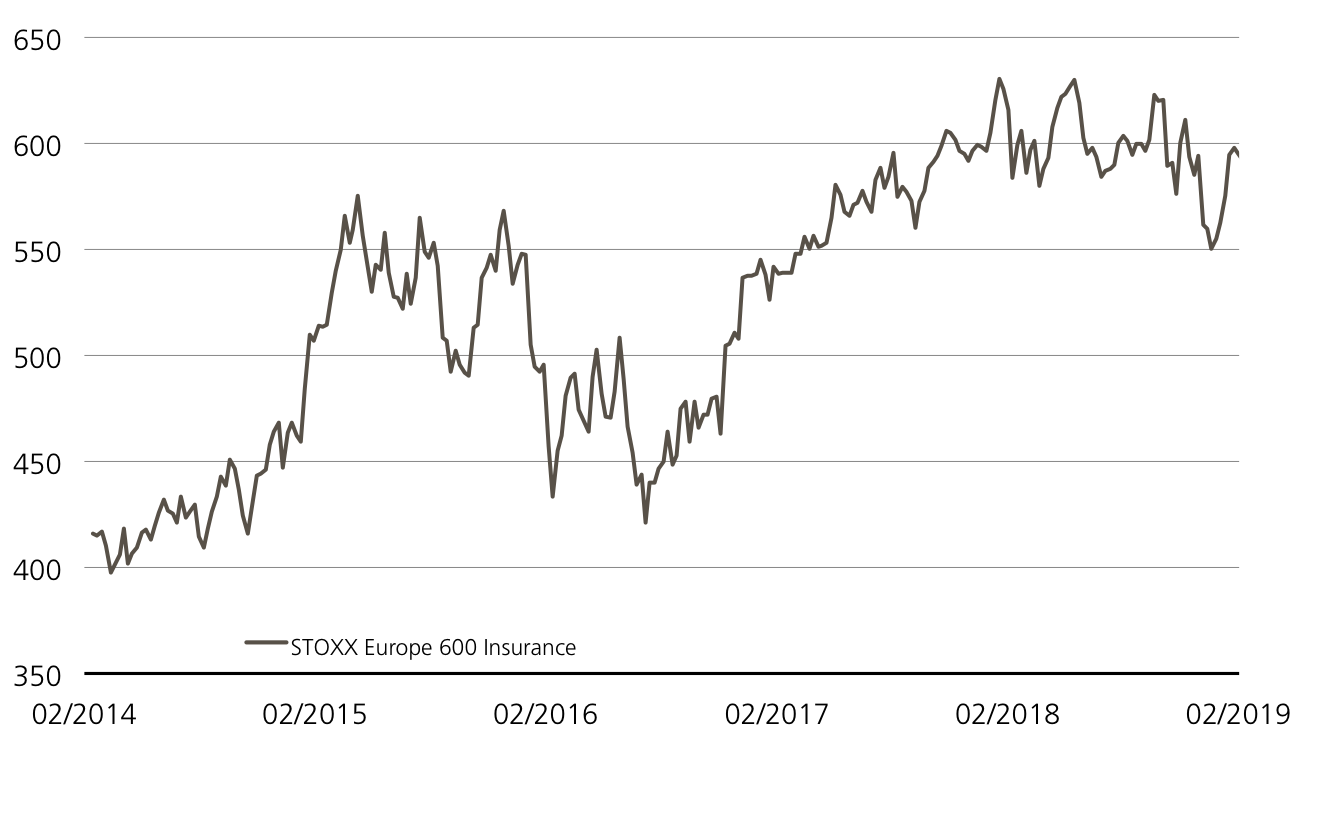
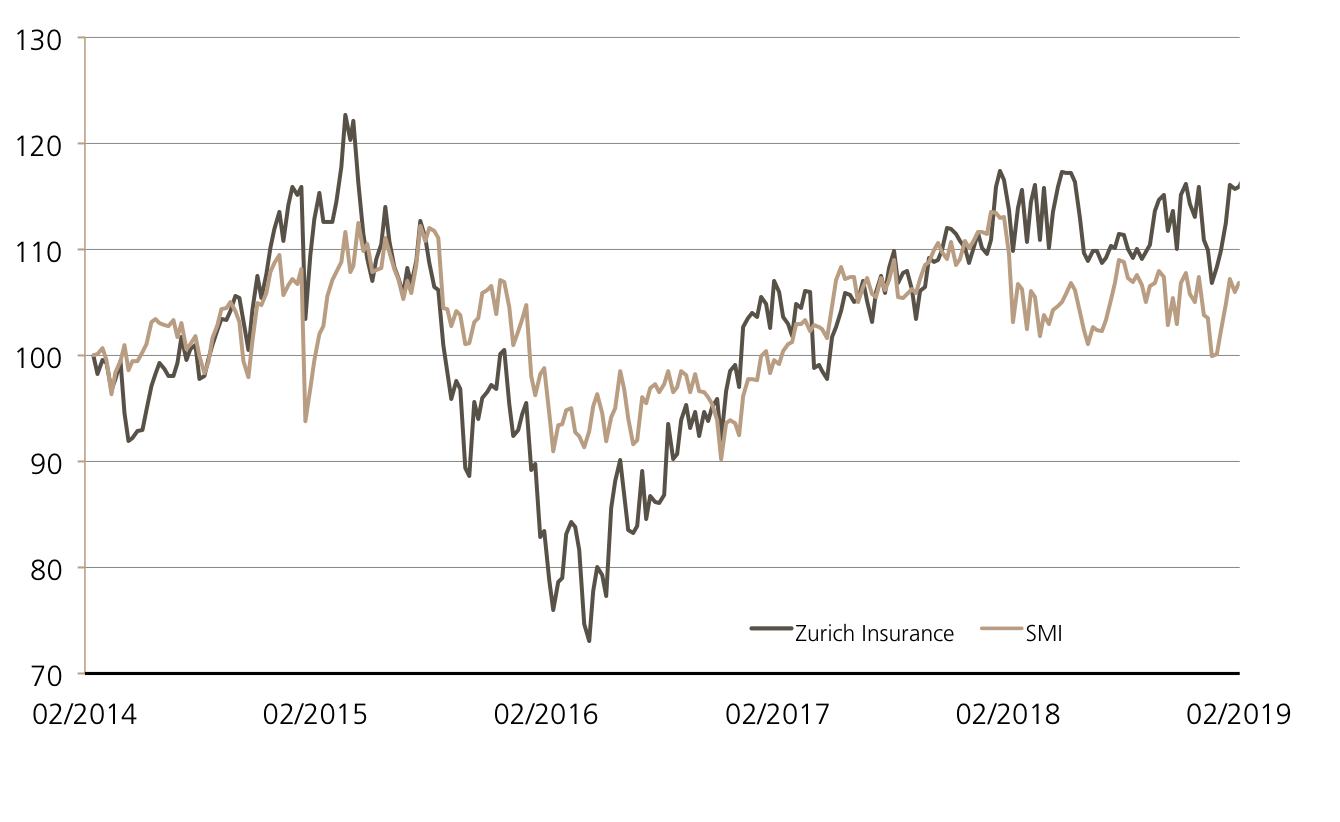
²) Die Konditionen der ETTs werden jährlich überprüft und können mit einer Frist von 13 Monaten nach Bekanntgabe angepasst werden
ETT auf den STOXX™ Europe 600 Insurance Index
5.00% p.a. Callable Kick-In GOAL auf Zurich Insurance
| Symbol | KCNGDU |
| SVSP Name | Barrier Reverse Convertible |
| SPVSP Code | 1230, Callable |
| Basiswert | Zurich Insurance |
| Handelswährung | CHF |
| Coupon | 5.00% p.a. |
| Seitwärtsrendite | 9.38% / 5.55% p.a. |
| Kick-In Level (Abstand) |
CHF 231.825 (27.55%) |
| Verfall | 05.10.2020 |
| Emittentin | UBS AG, London |
| Geld- / Briefkurs | 97.95% / 98.95% |
| Index | Stand | Woche¹ |
|---|---|---|
| SMI™ | 9’164.06 | 0.2% |
| SLI™ | 1’417.38 | 0.1% |
| S&P 500™ | 2’753.03 | 0.8% |
| Euro STOXX 50™ | 3’202.37 | -0.3% |
| S&P™ BRIC 40 | 4’178.84 | 0.0% |
| CMCI™ Compos. | 905.13 | -0.9% |
| Gold (Feinunze) | 1’315.10 | 0.1% |
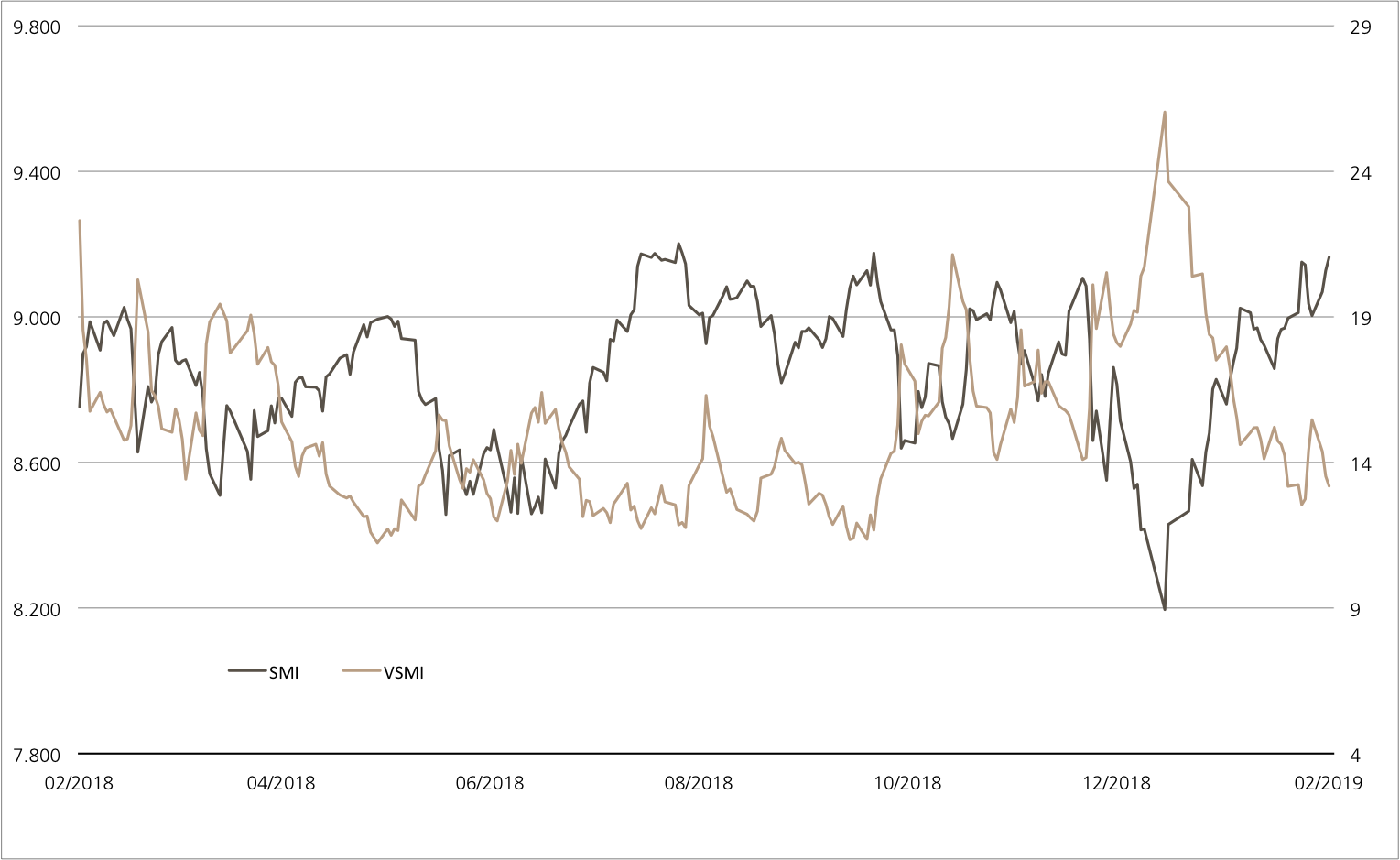
Spotify / Twitter
Duo mit enormer Reichweite
Gemeinsam mit vielen anderen Internetaktien erlebten Spotify und Twitter einen starken Jahresauftakt.¹ Allerdings verlor das Duo an Schwung, nachdem beide Unternehmen ihre Zahlen präsentiert hatten. Dabei verkündete Spotify zum ersten Mal überhaupt einen operativen Quartalsgewinn – Analysten hatten mit weiterhin roten Zahlen gerechnet. Mit einem Wachstum von 30 Prozent konnte die Musik-Plattform die Erwartungen beim Umsatz im Zeitraum Oktober bis Dezember 2018 in etwa erfüllen. Offenbar störten sich die Investoren am Ausblick der Schweden. Für 2019 rechnet Spotify unter anderem mit einer rückläufigen Bruttomarge. (Quelle: Thomson Reuters, Medienbericht, 06.02.2019)
Bei Twitter zeigte sich zuletzt eine ähnliche Konstellation. Der US-Kurznachrichtendienst präsentierte starke Zahlen für das vierte Quartal 2019. Nicht zuletzt dank steigender Einnahmen im Geschäft mit Videowerbung hat Twitter ein Umsatzwachstum von 24 Prozent verbucht. Gleichzeitig verdiente das Social-Media-Unternehmen mehr als erwartet. Auch Twitter sorgte mit der Prognose für enttäuschte Anleger. Für das erste Quartal 2019 stellt das Management Umsätze zwischen 715 Millionen und 775 Millionen US-Dollar in Aussicht. Der Mittelpunkt dieser Spanne liegt unterhalb des zuvor von Analysten im Schnitt erwarteten Geschäftsvolumens. (Quelle: Thomson Reuters, Medienbericht, 07.02.2019)
Chancen:Eine Alternative zum Direktinvestment in Spotify und Twitter bietet der ER Kick-In GOAL (Symbol: KCTLDU). Solange keine der beiden Aktien auf oder unter die jeweilige Barriere fällt, wirft das strukturierte Produkt zum Laufzeitende die Maximalrendite von 12.8 Prozent p.a. ab. Momentan bewegen sich die Basiswerte jeweils um mehr als 40 Prozent über dem Kick-In Level. Am 7. November 2019 kommt die Early Redemption Funktion erstmals zum Einsatz. Notieren Spotify und Twitter an diesem oder einem der weiteren, vierteljährlichen Beobachtungstage auf oder über dem Startniveau, verfällt der Kick-In GOAL vorzeitig. Anleger würden in diesem Fall wenige Tage später eine Überweisung bestehend aus dem kompletten Nominal sowie dem anteiligen Coupon auf ihrem Konto vorfinden.
Risiken:Kick-In GOALs sind nicht kapitalgeschützt. Notiert einer der Basiswerte während der Laufzeit einmal auf oder unter dem jeweiligen Kick-In Level (Barriere) und kommt zudem des Early Redemption Feature nicht zum Tragen, kann die Rückzahlung am Verfalltag durch Bartilgung entsprechend der (vom Strike aus) schwächsten Performance aus dem Duo erfolgen (höchstens jedoch zum Nominalwert zuzüglich Coupon). In diesem Fall sind Verluste wahrscheinlich. Zudem trägt der Anleger bei Strukturierten Produkten das Emittentenrisiko, so dass das eingesetzte Kapital – unabhängig von der Entwicklung des Basiswertes – im Falle einer Insolvenz der UBS AG verloren gehen kann.
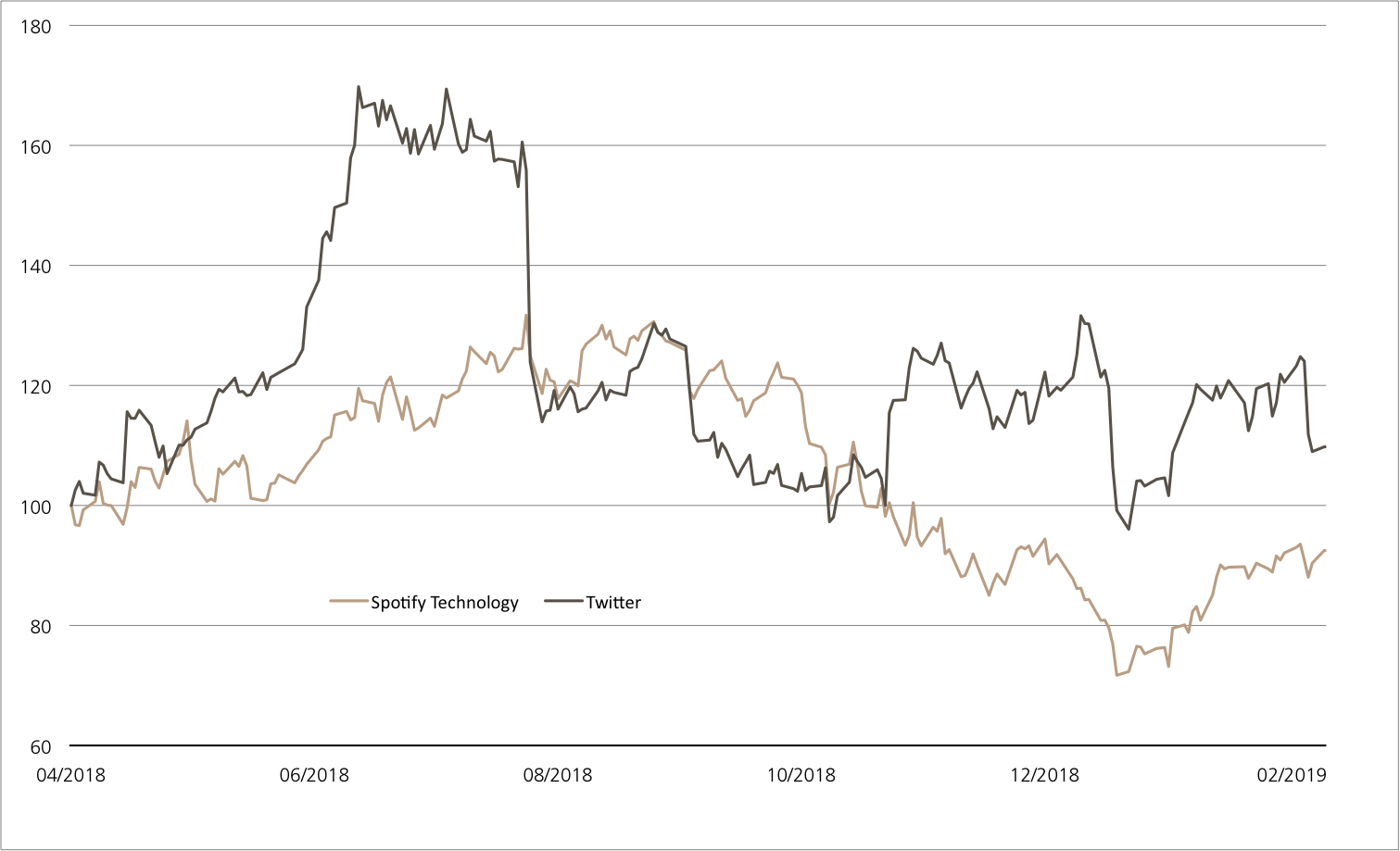
12.00% p.a. Early Redemption Kick-In GOAL auf Spotify Technology / Twitter
| Symbol | KCTLDU |
| SVSP Name | Barrier Reverse Convertible |
| SVSP Code | 1230 (Auto-Callable) |
| Basiswerte | Spotify Technology / Twitter |
| Handelswährung | USD |
| Coupon | 12.00% p.a. |
| Seitwärtsrendite | 16.29% (12.84% p.a.) |
| Kick-In Level (Abstand) |
Spotify: USD 72.885 (49.22%) Twitter: USD 17.495 (43.78%) |
| Verfall | 08.05.2020 |
| Emittentin | UBS AG, London |
| Geld-/Briefkurs | 97.50% / 98.50% |
Termsheet Weitere Produkte sowie Informationen zu Chancen und Risiken finden Sie unter: ubs.com/keyinvest Quelle: UBS AG Stand: 13.02.2019
²) Die Konditionen der ETTs werden jährlich überprüft und können mit einer Frist von 13 Monaten nach Bekanntgabe angepasst werden



